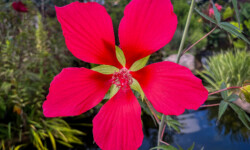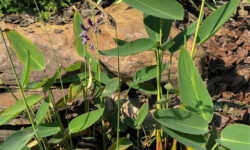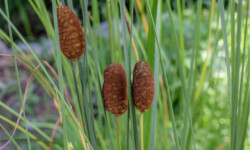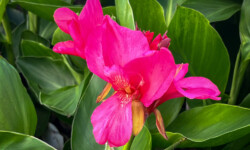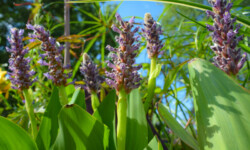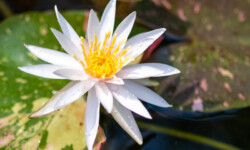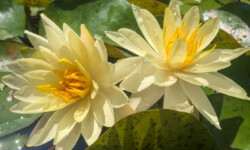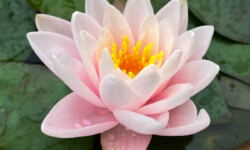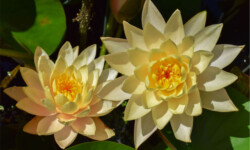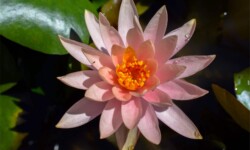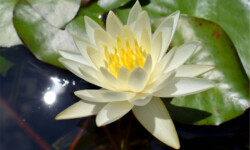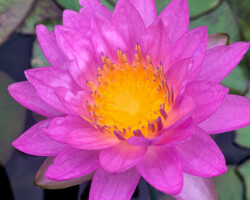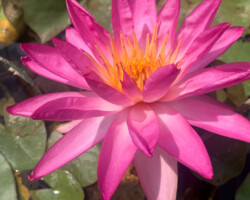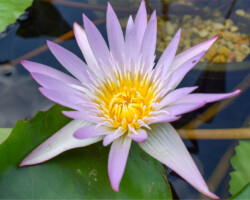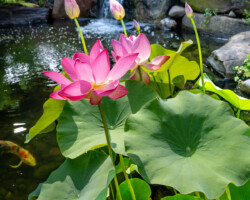Shop Southcentral PA’s best selection of
POND PLANTS
Located in York, PA
Worth the drive from Gettysburg, Baltimore, Harrisburg, Lancaster and all over the Mid-Atlantic!
Are you a nursery owner or pond contractor looking for wholesale plants?
Click here.
Southcentral PA’s best selection of
POND PLANTS
Located in York, PA
Worth the drive from Gettysburg, Baltimore, Harrisburg, Lancaster and all over the Mid-Atlantic!
Are you a nursery owner or pond contractor looking for wholesale plants?
Click here.
AVAILABLE NOW
- Hardy Waterlilies
- Hardy Marginals & Bog Plants
- Hardy Water Lotus
- Native Wetland Plants
- Tropical Marginals & Bog Plants
- Tropical Cannas
- Floating Water Hyacinths
- Floating Water Lettuce
- Hardy Hybrid Waterlilies
- Rare & Unusual Bog Plants
- Shade-Tolerant Plants
- Carnivorous Pitcher Plants
Click to learn more about our selection of ...
COLD-HARDY CARNIVOROUS BOG PLANTS
These plants actually eat bugs! They will overwinter here in York (and farther north) and will come back year after year. Perfect for that slow-moving corner of your stream or waterfall, these native plants are really amazing conversation pieces.
HARDY MARGINALS
A hardy plant is one that will usually survive the winter in our area (USDA Zone 6). Hardy plants do not need to be “sunk” or removed from the pond in cold weather and can remain where planted year-round.
A marginal plant is one that likes to have its feet wet along the pond’s edges or in a stream. Most like to have their roots submerged in anywhere from 1 to 12 inches of water, depending on the type and size of the plant.
The list below shows some of the hardy marginal plant varieties we usually carry. Selection changes daily, so please visit us to see what’s available.
Please note: While we keep our plant tables stocked full from about April until September, we can’t always guarantee that every plant listed will always be available. Please visit us to see our current selection. We also have lots of plants that aren’t listed below – so you never know what you might discover!
TROPICAL MARGINALS
A tropical plant is one that will not survive winter in our area. Most pond owners choose to treat these plants as annuals and replace them yearly, although some people have success overwintering them indoors.
A marginal plant is one that likes to have its feet wet along the pond’s edges or in a stream. Most like to have their roots submerged in anywhere from 1 to 12 inches of water, depending on the type and size of the plant.
Please note: While we carry a wide selection of tropical plants from about mid-May until September, we can’t always guarantee that every plant listed will always be available. Please visit our beautiful gardens and retail store to browse our current selection. We also have lots of plants that aren’t listed below – so you never know what you might discover!
FLOATING & SUBMERGED PLANTS
Water hyacinths and water lettuce are the most popular floating plants for ponds. Place these plants directly in the water, with their roots hanging down. No soil needed! You may want to use a floating plant loop to keep them contained to one spot.
Hyacinths and lettuce are tropical – meaning they won’t survive the winter outdoors in our area. They will also wilt and brown around the edges during early spring cold snaps. These plants are inexpensive and spread quickly, so most pond owners compost them at the end of the growing season and replace them in late spring, after the risk of frost has passed.
HARDY WATERLILIES
Waterlilies are an excellent choice for deeper areas of the pond. We recommend planting them about 18 to 24 inches below the water’s surface, although they can survive deeper depths. Waterlilies’ leaves and flowers float on the water’s surface, providing shade for fish underneath them and shelter for bugs and frogs light enough to walk on top of them. Almost all hardy waterlilies bloom during the day and close at night.
Hardy waterlilies will survive most winters in our area if planted at least 18 inches deep. Contrary to popular belief, you do not need to “sink” them in cold weather.
HARDY HYBRID WATERLILIES
Hybrid waterlilies are hardy lilies that have been crossed with tropical varieties to create unique flowers and foliage. In other words – these lilies look tropical, but they’ll survive most winters! They often exhibit unique colors – like purple – that don’t usually appear in hardy waterlilies, and their blooms tend to stand higher above the water.
TROPICAL WATERLILIES
Big, bright and beautiful, tropical waterlilies steal the show in just about any pond they call home. These plants will not survive the winter in our area, but what they lack in longevity they make up for in looks and ease of maintenance. The flowers come in unusual colors (i.e. purple and blue), the lilypads have unique serrated edges (sometimes with striking mottling!) and some even bloom at night. Tropical lilies also tend to grow larger than their hardy counterparts, and their big blooms often stand a few inches above the water.
HARDY LOTUS
Lotus look a little like waterlilies, but with big flowers and leaves that grow above the water instead of stopping at the surface. These showstoppers like to live with their roots submerged in about 10 inches of water. They make great additions to ponds or patio containers.
See the gallery below for a preview of some of our favorites. Check back often to be the first to know when they’re available for purchase!
Plants are available for sale in-person at Splash Supply Co.
Plants are available for sale in-person at Splash Supply Co.
1-Year Happy & Healthy
PLANT HEALTH
Guarantee
Congratulations on your new plant!
Our Aquatic Plant Experts have lovingly grown, cared for and talked to your plants from the beginning, making sure they’re happy and healthy by the time they reach your pond. We know you’ll love them as much as we did.
Carefully following the care instructions on your plants’ tags will help them continue to thrive.
If your plant dies within one year of purchase, and we determine, at our discretion, that you have followed all care instructions, we may offer credit toward a new plant (no refunds).
To claim your credit, please bring the following items with you to Splash:
- The dead plant
- Your receipt
- The plant’s original tag
- A picture of your pond, with the area where the plant was planted clearly visible
Your plant comes equipped with lots of resources to help you give it the best home possible. Scan the QR code on the bottom of the plant’s tag for additional tips and educational videos.






